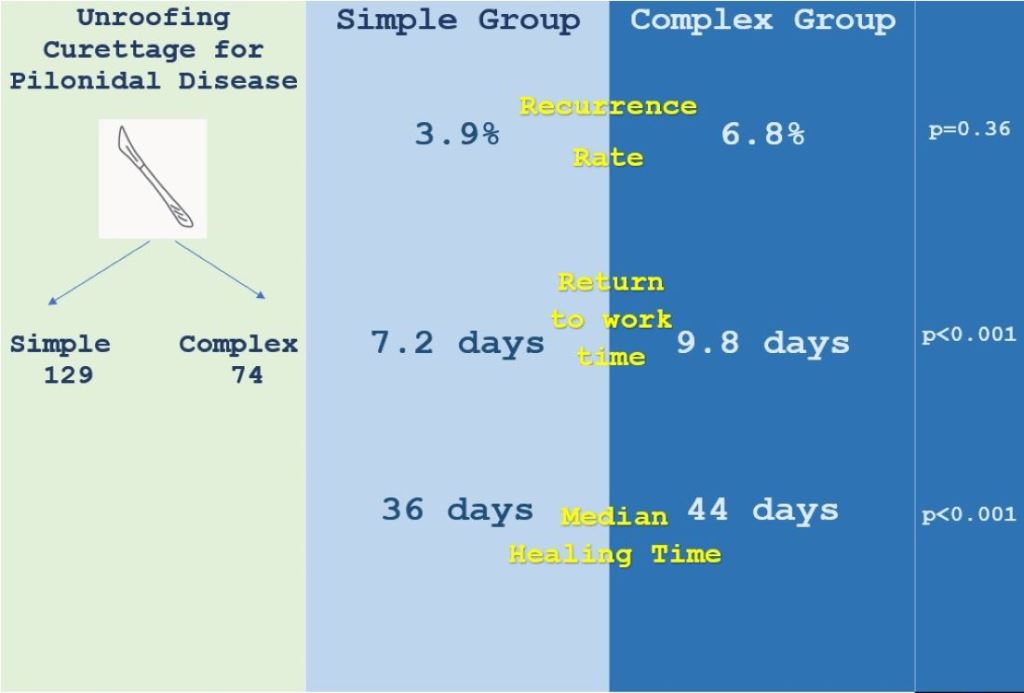Sacrococcygeal pilonidal disease is a chronic inflammatory condition with an incidence of 26:100,000 in the United States. However, its etiology and optimal treatment remain controversial. We included 129 and 74 patients with simple and complex sacrococcygeal pilonidal disease, respectively. The primary outcome was pilonidal sinus recurrence after unroofing curettage. Secondary outcomes were pain scores, time to return to work/school, and time to complete recovery. At a median follow-up of 53 months, the recurrence rate was 4.9% in all patients, not significantly higher in subjects with the complex disease. Duration of surgery (15.4 vs. 12.2 min), time to return to school/work (9.8 vs. 7.7 days), and complete healing time (44 vs. 36 days) were longer in patients with the complex disease. Postoperative complication rates, pain scores, and quality of life scores between the two groups did not differ. Unroofing curettage may be a good first-choice treatment for both simple and complex sacrococcygeal pilonidal disease.

